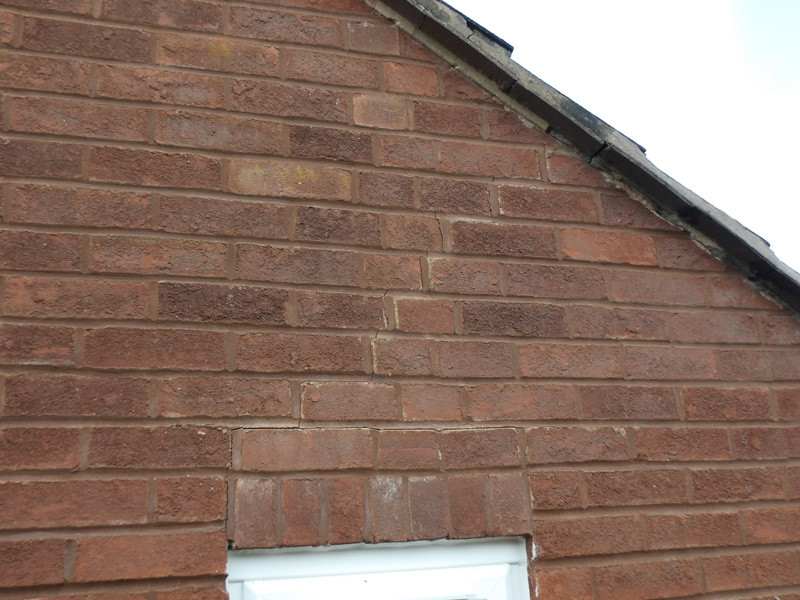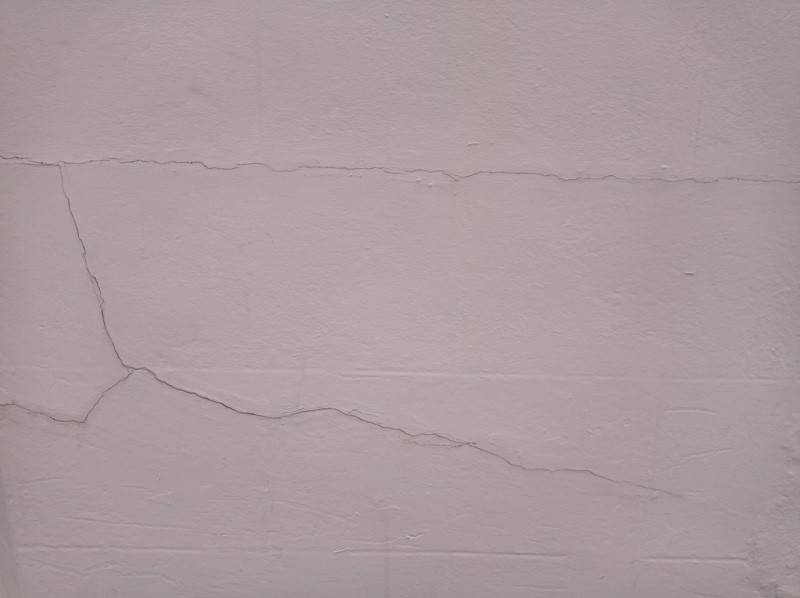At Nova Surveyors, we assess cracks during both Level 2 and Level 3 surveys using a combination of professional training, experience, and industry guidance, including the Building Research Establishment (BRE) Digest 251: Cracking in Buildings. This guide helps surveyors classify cracks, understand their likely causes, and recommend appropriate next steps.
Why Buildings Crack
Buildings are made from different materials - bricks, blocks, timber, concrete, plaster - and each reacts differently to environmental changes. As materials expand and contract with temperature and moisture (a process known as thermal movement), small cracks often appear at junctions between different components.
- Subsidence or heave (movement of the ground below)
- Cavity wall tie failure
- Inappropriate removal of load-bearing elements (e.g., walls, doors, lintels)
- Poor construction, practices or materials
- Ongoing structural movement
Understanding Crack Severity: The BRE Classification
The BRE Digest 251 provides a helpful scale (Levels 0–5) to classify cracks based on width, visual appearance, and required action:
| Cat | Width | Description | Typical Action |
|---|---|---|---|
| 0 | Hairline (< 0.1 mm) | Usually not visible. Often occurs in finishes and is not structurally significant. | No action required. |
| 1 | Up to 1 mm | Fine cracks that may be visible but are usually cosmetic. | Decoration may be required. |
| 2 | 1 mm to 5 mm | Cracks easily filled. Not likely to be structural. | Fill and redecorate. Monitor for change. |
| 3 | 5 mm to 15 mm | Some structural significance. Cracks may require cutting out and repair. | Specialist advice recommended. |
| 4 | 15 mm to 25 mm | Serious cracks that may require rebuilding or strengthening. | Urgent structural investigation required. |
| 5 | > 25 mm | Very severe structural damage. | May require partial or complete rebuilding. |
During surveys, we don’t just measure width - we also consider the direction, location, pattern, and history of the crack to understand what's causing it and whether it's active or historical.
How We Approach Cracks in Level 2 and Level 3 Surveys
Level 2 Survey (HomeBuyer Report)
A Level 2 survey is suitable for relatively modern or well-maintained homes. It provides a concise overview of the property’s condition, including:
- Identification of visible cracks and their severity
- Assessment of likely causes based on experience and guidance
- Advice on whether cracks are likely to be cosmetic or more significant
- Recommendations on whether monitoring or further investigation is needed
If cracks are classified in Categories 1–2, they can often be filled, decorated, and monitored. However, where cracks approach or exceed Category 3, or where patterns raise concern, we recommend a Level 3 survey or specialist inspection.
Level 3 Survey (Full Building Survey)
A Level 3 survey is more in-depth and is appropriate for older properties, those with known defects, or where significant cracking is present.
- Examine cracks in detail - shape, width, pattern, and direction
- Look for associated issues (e.g. bulging, distortion, sticking doors/windows)
- Identify evidence of previous repairs or attempted concealment
- Advise whether movement is likely ongoing or historic
- Recommend further steps, which may include structural calculations, monitoring, or remedial works
All levels of pre-purchase survey will consider the geology of the area and include a search of the geological formation. Surveys will also consider potential contributory factors, such as underground leaks, drainage defects, tree root action or cavity wall tie failure. Where needed, we can escalate the assessment to our in-house structural expert.
Devon Expertise Matters
From coastal salt damage and clay shrinkage to inappropriate historic alterations, homes in North Devon face unique challenges. Our surveyors combine technical insight with local experience, helping you make confident decisions – whether you're buying, selling, or investigating a concern.
- Barnstaple – Period terraces, timber repairs, damp issues
- Braunton & Saunton – Marine exposure, salt-related cracking, roof corrosion
- Bideford & Appledore – Sloping sites, retaining walls, subsidence checks
- Lynton & Lynmouth – Historic construction, flood risk, hillside movement
- South Molton & villages – Cob walls, thatched roofs, chimney movement
- Many properties in Mid Devon, including areas like Tiverton, Crediton, and Bampton, feature solid cob or stone walls, which can be prone to damp if inappropriate modern materials are used.
- We regularly survey homes in Mid Devon affected by seasonal movement due to shrinkable clays, particularly around Cullompton, Tiverton, and Crediton.
- Thatched and slate roofs are common in Bampton and surrounding villages, often requiring careful inspection for nail fatigue, poor ventilation, or timber decay.
- Rural homes near Witheridge, Silverton, and Morchard Bishop may rely on off-mains drainage, with potential issues linked to outdated or poorly maintained septic systems.
Need Structural Advice? Nova Surveyors Can Help
At Nova Surveyors, we go beyond standard building surveys. We have access to both a , RICS Building Surveyors, Chartered Building Surveyor and Chartered Building Engineer, allowing us to:
- Carry out structural inspections and reports
- Design or review structural repairs
- Liaise with your builder, architect, or conveyancer
- Provide expert recommendations if your property is affected by subsidence, movement, or serious cracking
We also support buyers, sellers, and landlords in making informed decisions, whether you're managing a single repair or considering a full refurbishment.
When to Worry (And When Not To)
Not every crack is a cause for alarm. In fact, most buildings - especially older ones - will have some degree of minor cracking. That said, early assessment can prevent costly repairs later.




